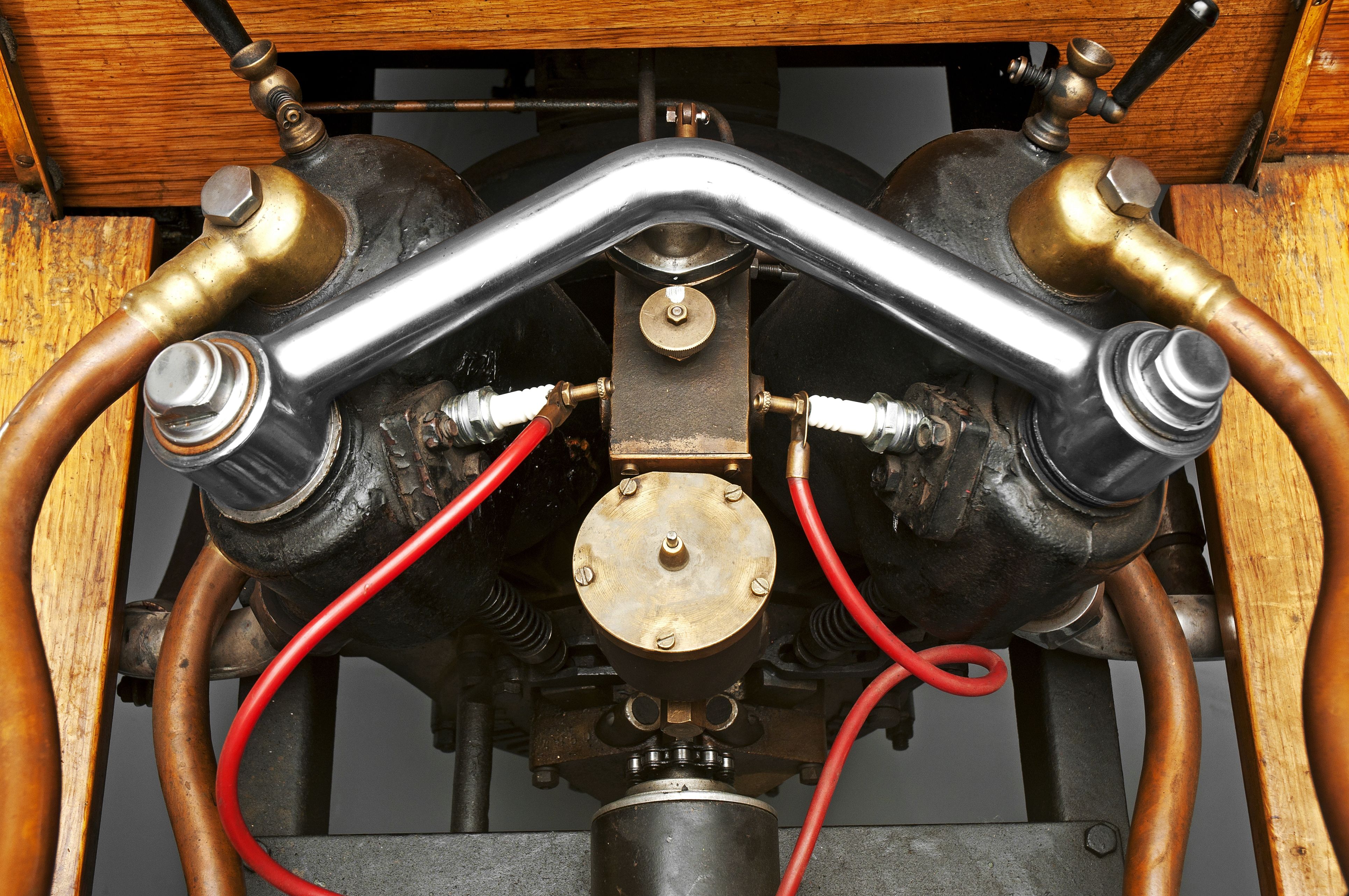Engine-making tradition
Škoda’s engine development tradition in Mladá Boleslav stretches back almost a century and a quarter. The history of the development and production of internal combustion engines in this town dates back to 1899, when Václav Laurin and Václav Klement built their first bicycle fitted with an auxiliary engine. As early as 1905, Laurin & Klement presented its first car, the Voiturette A, which was powered by a 1-litre liquid-cooled engine developed in-house.
 The Voiturette A and its 1 litre engine
The Voiturette A and its 1 litre engine
With a few exceptions, the Czech carmaker used its own power units almost exclusively until it joined the Volkswagen Group. And even this merger in 1991 did not put an end to the engine-making tradition in Mladá Boleslav, although engines developed by other group brands did start to appear under the bonnets of Škoda cars. Škoda continued to develop its own units and continued to manufacture them.
1997 saw the start of production of the 1.0 MPI engine in Mladá Boleslav, which the brand also supplied to other car companies in the group. The legendary 1.2 HTP unit of the EA 111 series, the predecessor of the current EA 211 series, was developed in-house. In almost 15 years of production, this three-cylinder engine has found its way into more than 3.5 million vehicles from all of the Group’s “volume” brands (in addition to ŠKODA, these include Volkswagen, SEAT, Cupra and Volkswagen goods vehicles).
 1.2 HTP engines delivering various power outputs were not used only in Škoda's Fabia and Roomster models, but in other Volkswagen Group models like the VW Polo and Seat Ibiza.
1.2 HTP engines delivering various power outputs were not used only in Škoda's Fabia and Roomster models, but in other Volkswagen Group models like the VW Polo and Seat Ibiza.
Production of the EA 211 engine series began in Mladá Boleslav in 2012 with the new 1.0 MPI type. Shortly afterwards, Škoda was put in charge of the complete development of MPI power units for the entire group. In 2014, Škoda opened a brand new engine centre, which gave it the necessary capacity and cutting-edge technology to take responsibility for an entire engine series.


 Johannes Neft
Johannes Neft



 Martin Hrdlička
Martin Hrdlička


















